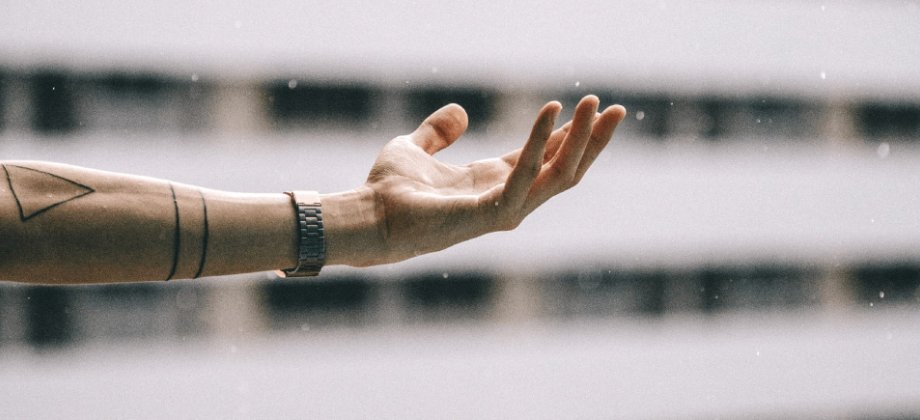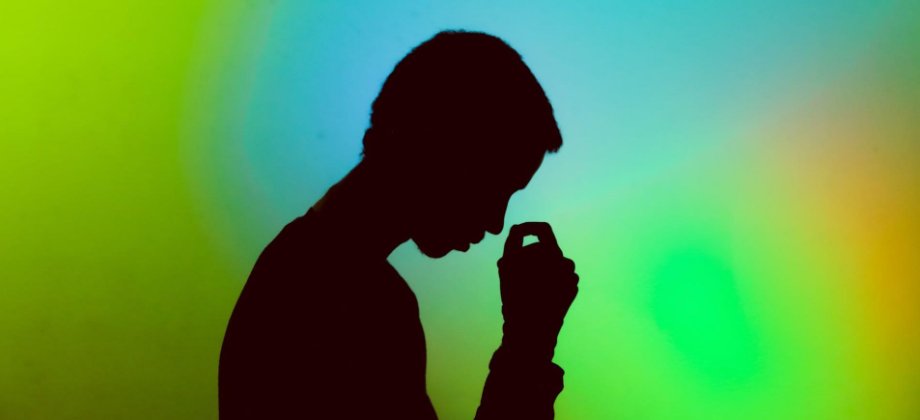
Three Powerful Yoga Mudras that can Enrich your Yoga Classes
Did you know that the key to mental, spiritual and body health lies in your hands? They hold an innate healing power that has been used for centuries for healing various illnesses or imbalances. The use of mudras has been an integral part of many Hindu and Buddhist rituals for thousands of years.
The term ‘Mudra’ comes from Sanskrit, meaning a symbolic hand gesture that has the power of channeling the energy of your system and bringing health and balance to your body, mind, and soul. Recent studies have also proved that regular mudras not only contribute to one’s overall good health but may also be used as a preventive measure.
Let's now have a look at the most important and beneficial mudras to understand how to integrate them into our classes.
The Mudra of Wisdom: Vitarka Mudra
Whether you're religious or not, chances are you have encountered at least once in your life the image of the statue of Gautam Buddha performing Vitarka Mudra. But there's more because this gesture doesn't feature in Buddhist iconography only, but also in Christian and Islamic.
And the reason for that is because this hand gesture is closely interlinked with wisdom and influential communication abilities achieved through enlightenment. And actually, this is also a common gesture practiced when a teacher wishes to impart knowledge. In fact, this mystic gesture historically represents the transmission of the wisdom of prophets and gurus to their students. Hence, its name, which derives from Sanskrit, literally means “reasoning” and it's also known as “discussion Mudra”.
Also, if you take a closer look at the Vitarka mudra you might find it somehow similar to the Chin mudra or another meditation mudra, the Abhaya mudra as well as to the Vyakhyana Mudra. And that is so because they belong to a certain group of symbolic gestures called "Buddhist mudras".
In this particular mudra, the pointing hand is in front of the heart, with the palm facing outward while the index finger and thumb touch and create the shape of a circle, the symbol of perfection and infinite. On top of it, there's also a deep meaning hidden behind this mudra, as the thumb symbolizes the fire element and the Brahman, the universal soul, the index finger represents the air element and the individual soul while the three raised fingers represent the tripartite nature of the Universe. Also, Vitarka mudra represents the joining of the basic duality, the sun, and the moon, masculine and feminine, which are, as we know, the complementary opposites of the Universe.
- On top of it, the regular use of this mudra can:
- Promote knowledge and infuse buddha's teachings into our minds and spirit
- Bring clarity to mind and thoughts as well as improve our communication skills
- The circle formed by the fingers allows us to channel the energy, allowing us to feel recharged and uplifted.
How To Perform Vitarka Mudra
Historically, it was only the right hand that performed Vitarka mudra, but today we can see many yoga practitioners practising it with both hands. In this mudra, the thumb and index finger are connected while the remaining fingers, the middle finger, the ring finger, and little fingers are pointing towards the sky. Let's see how to perform Vitarka Mudra step by step:
- Start in a simple seated posture, ensuring that the spine is straight and the shoulders are relaxed. Take some deep breaths in and out and settle into the shape.
- Raise the right hand at the shoulder level, palm facing forward, index finger and thumb touch with the other three fingers are completely extended while the left-hand rests on the lap.
- Hold the mudra for about 15-20 minutes
- Release Vitarka mudra and take some time to feel its deeply calming effects.
For this reason, when you need to balance the ether energy you can use this immensely helpful mudra to invite openness, spaciousness, and emptiness into your system.
Experiencing pure balance: Shunya Mudra
Have you ever heard of the Pancha-tattva? This theory originates from the ancient Indian medical system, the Ayurveda and it states that our body is composed of five elements: air, water, earth, ether/space, and fire, which are all collectively called "Pancha-tattva". Oftentimes though what happens is that stress and an overall hectic or unhealthy lifestyle can lead to an imbalance of one of these elements, which may trigger certain negative effects on both body and mind.
So that's why we need to take proper care of our elements and we can do this anytime through Yoga, Meditation, Pranayama, and the use of specific mudras. For this reason, when you need to balance the ether energy you can use this immensely helpful mudra to invite openness, spaciousness, and emptiness into your system.
But how do we know when it's out of balance? We start to experience discomforts and issues like vertigo, migraine, and ear disorders.
The name Shunya itself comes from Sanskrit, meaning “emptiness,” “openness” or “spaciousness" and it's also referred to as Aakaash Shaamak where Akash is the Sanskrit term for "space". Related to the theory of Pancha tattva is that of the Pancha Kosha, which claims that each finger is connected with a specific element. Following this theory, you can balance the space element, which is correlated to the middle finger, with the fire energy that is, in its turn, connected to the thumb. That's why the thumb and the middle finger touch while the other fingers are fully extended in this mudra!
But there's more: according to this theory, the middle finger is seen as the one which is related to heaven, and therefore, the use of this mudra can provide access to the realm of heaven using fire energy and ether energy, and that explains why this mudra is also called the "Heaven mudra".
Moreover, this mudra:
- Is a real panacea for many ear problems like deafness and infections
- Its regular practice may enhance our intuition
- elps against heart disease and throat diseases
- Can fight and prevent travel sickness
- Great to treat any balance issues
Plus, this mudra can be combined with yoga asanas such as:
- Sukhasana (Easy Pose)
- Utkata Konasana (Goddess Pose)
- Skandasana (Wide-legged squat)
How To Do Shunya Mudra
- To perform Shunya Mudra start by sitting in any comfortable posture, possibly in an easy pose, making sure that the spine is straight and the shoulders are relaxed
- Take deep breaths in and out before starting and try to practice with closed eyes, to connect yourself with your body
- Gently press the tip of the middle finger to the bottom of the thumb and the other fingers are completely extended
- Hold Shunya mudra for 14-20 minutes a day

The Mudra of strenght: Kali Mudra?
Razor-sharp teeth, a necklace of human heads, a skirt made of arms, a knife in one hand, and a red-blood tongue that sticks out: Hindu goddess Kali's appearance is incredibly scary and ferocious. Despite her intimidating look, she's actually a deity who carries a deep, positive meaning. She is also the manifestation of goddess Durga, who is also the impersonification of goddess Mahadevi. Goddess Kali is also known as the "Destroyer" as she represents our inner power of eradicating evil energies from our lives, making room for growth, positivity, and transformation. And transformation is a process that is naturally interconnected with the concept of time, that's why the goddess Kali is also seen as the deity of time and creation. And interestingly enough, the name "Kali" itself derives from the Sanskrit word "Kala" which stands for “time”.
Likewise, we can soak up her strength and power with a simple yet effective Mudra, the Kali Mudra (aka Maha Kali Mudra or Ksepana Mudra). Plus, when you perform this mudra the index fingers are completely extended and they recreate the shape of a sword. The sword is that of goddess Durga, who destroys Maya, illusions. Also, keep in mind that this gesture can also be practised during a few Yoga Asanas, like:
- Anjaneyasana (Crescent Lunge),
- Virabhadrasana I (Warrior I)
- Utkatasana (Chair pose).
But let's now explore more about the kali mudra benefits:
- It can clear out all negative energy and blockages through our energy channels. And when the prana is free to flow in our channels, the Sushumna Nadi is activated and it encourages a positivity boost within the body and mind.
- Helps us unlock our inner strength, hence making us feel empowered
- It can help us get rid of mental and muscular stress.
- When we can control unwanted thoughts, we can also enhance physical detoxification, improving both the digestive system and respiratory system
How To Do Kali Mudra
- To perform this hand gesture, sit in any comfortable meditation pose, such as an easy pose, making sure that your spine is completely extended.
- Palms together, clasp the hands with all fingers interlocked
- Extend the index fingers and ensure that they're connected to each other
- Make sure that the fingers are pointing upwards and bring the elbows against the torso
- Keep the other fingers interlaced while the left thumb rests on the right thumb.
- With every inhale, feel the energy of Kali entering and filling up your body. Keep taking deep, slow, and conscious breaths.
- Release the mudra and sit in meditation for a while to feel the effects of this powerful mudra
- Practice this mudra for at least 15 minutes daily. Ideally, try to practice it within a timeframe that goes between 2 am and 6 am, or 2 pm and 6 pm.
Final Thoughts
So in this article, we’ve dove deep into the universe of Mudras and explored the significance and benefits of three different hand gestures, Vitarka Mudra the gesture of wisdom, Shunya Mudra the gesture for balance and Kali Mudra, the mudra of inner strength.
So I genuinely hope this article has shed a light on the fascinating world of Mudras so that you know which one to choose to enrich your classes with the innate healing properties of our hands!






